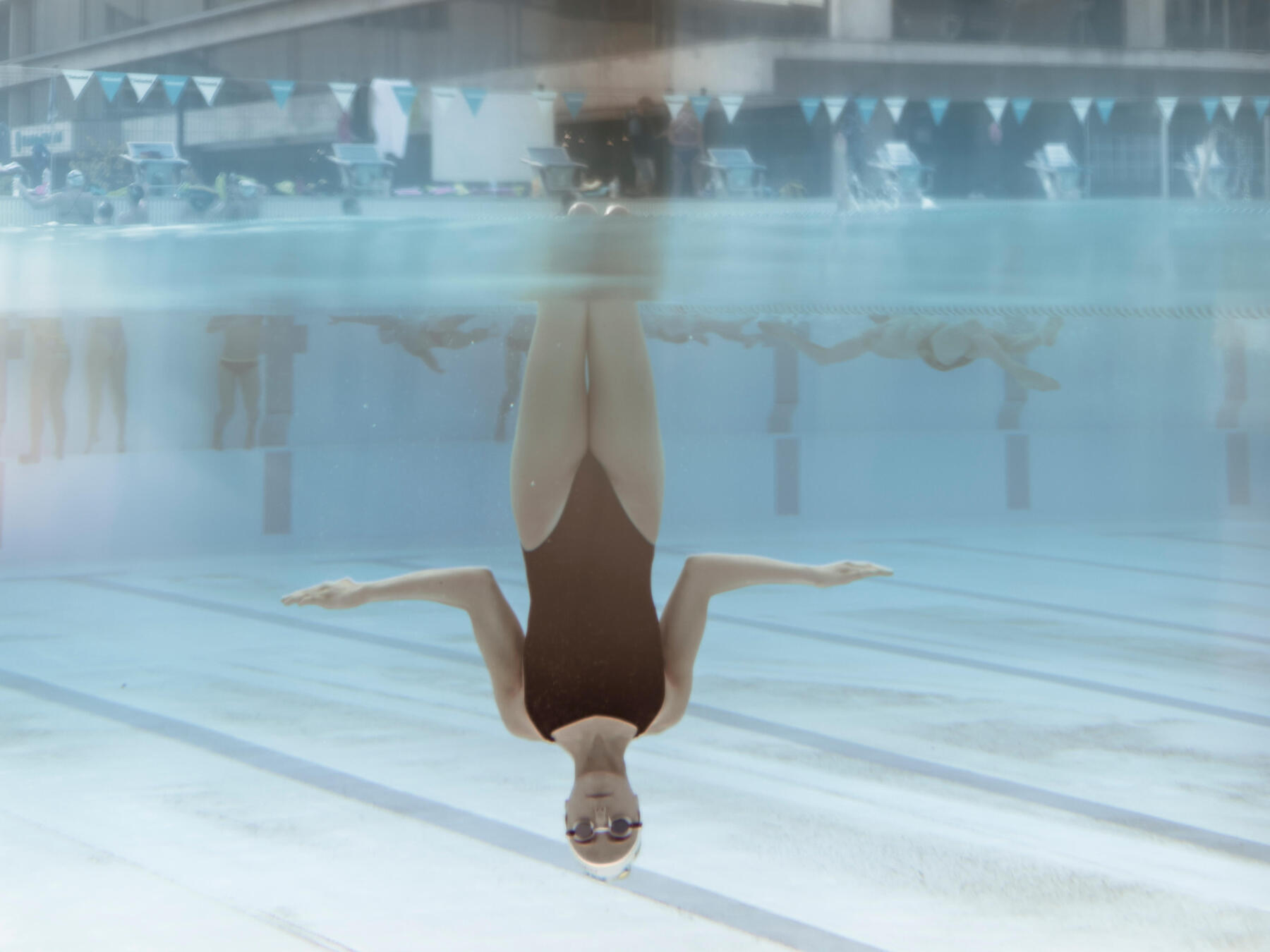What is upside down sculling?
Upside down sculling is a movement that allows swimmers to push their legs out of the water and to move during "upside down" figures, such as verticals or splits. It is one of the fundamental movements of synchronised swimming.
In this movement, your arms are folded at 90°, with the forearms perpendicular to the body and parallel to the surface, and your hands quite flat. Only your forearms move. Your arms must stay close to your ribs, as your forearms are spread out sideways, slightly upwards and are then drawn together against your chest.
Triple World Champion, Virginie Dedieu, shares her tips on upside down sculling.








